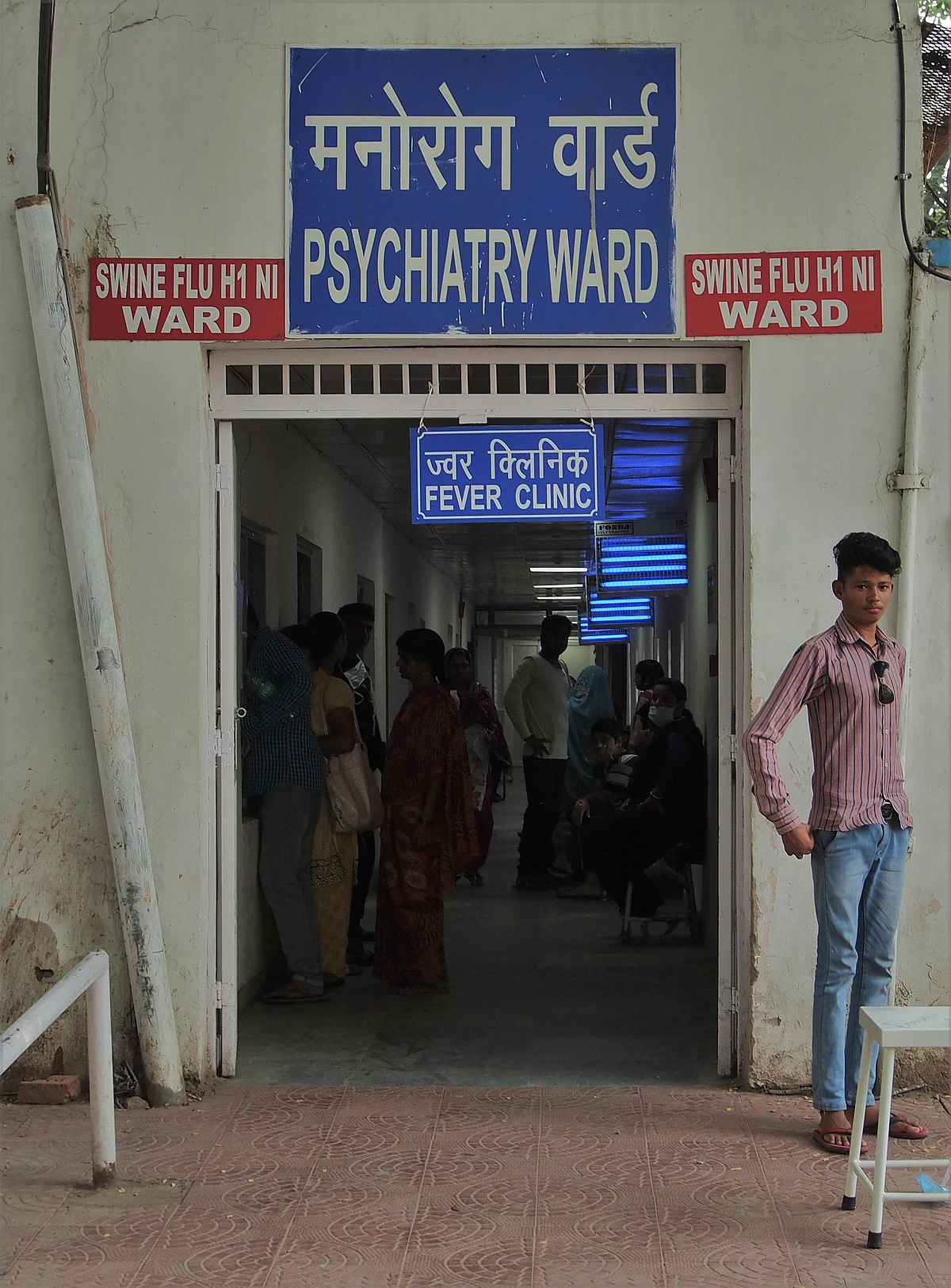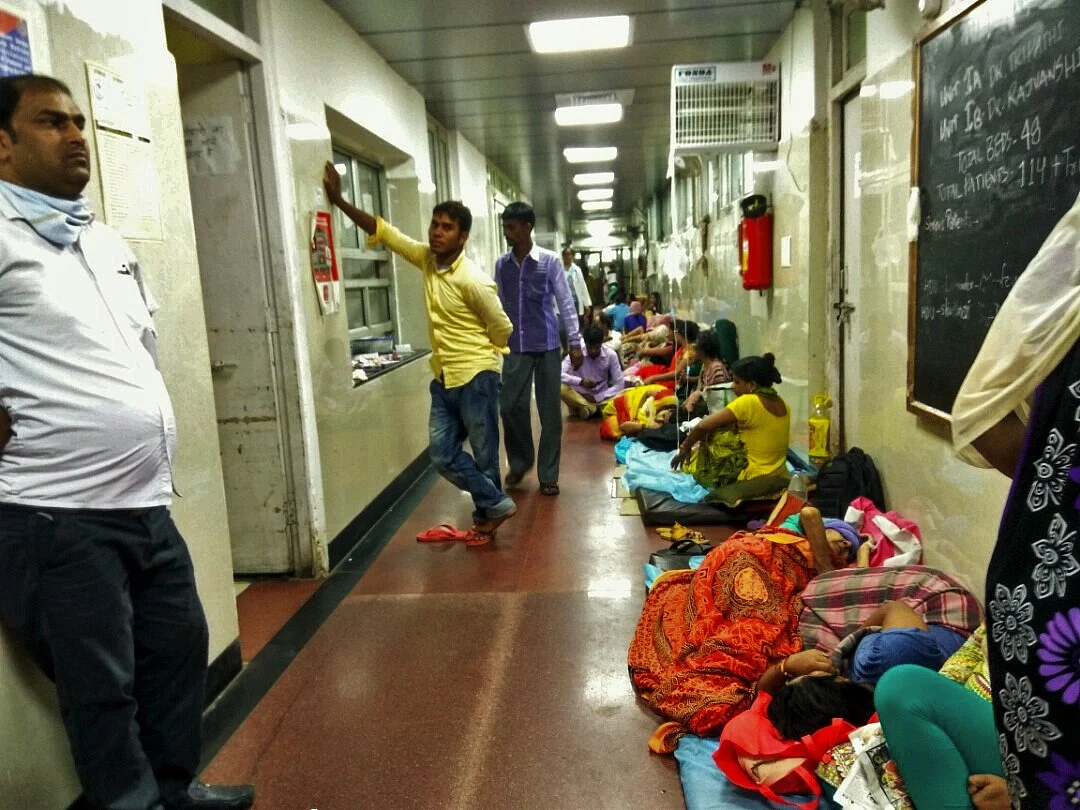Chikungunya in Delhi: A plague of anxiety and bad infrastructure
Callousness, a shortage of doctors and hospital beds — this is how an illness turns into an outbreak
“It’d be better for all of you to keep your lids shut,” National Green Tribunal (NGT) Chairperson Justice Swatanter Kumar told the counsels of National Capital Territory (NCT) of Delhi and its municipal corporations on September 21.

Support Independent Media
The media must be free and fair, uninfluenced by corporate or state interests. That's why you, the public, need to pay to keep news free.
ContributeThe Tribunal was hearing a case filed by NGT advocate Gaurav Bansal naming the municipal corporation of Delhi (MCD), the government of India, the government of Delhi and Delhi Jal Board as parties in the case of the rising incidence of dengue and chikungunya in Delhi. Earlier the Tribunal had taken suo moto cognisance of the issue and summoned MCD, Delhi Development Authority (DDA) and the government of Delhi. On Wednesday, the NGT merged the two cases and set the scene for a hearing that could have been a Monty Python sketch.
Representing North Delhi Municipal Corporation (North MCD), Pooja Kalra insisted that the authorities have done substantial disease prevention work. Similar claims were made by the counsel for the East Delhi Municipal Corporation, Balendu Shekhar. Kalra went as far as to blame the citizens of Delhi. “My lord, people don’t let our officials enter their houses to check for breeding areas,” she complained.
For every claim, there were counter-arguments that revealed just how little Delhi’s municipal corporations have done to prevent the chikungunya outbreak. The statistics speak for themselves.
| Chikungunya cases in Delhi in 2015 | Chikungunya cases in Delhi in 2016 |
| 64 | 2,625 |
Not that Kalra and Shekhar let statistics inform the points they made. “The chikungunya mosquito – Aedesaegypti and Aedesalbopicti – is a ‘royal’ mosquito. It breeds indoors and not in the waste dumps. So our waste disposal system is not responsible,” Shekhar pronounced, prior to the hearing.
Fortunately for Delhi, the NGT bench is better informed than the learned counsels. BS Sajwan, an excerpt on the bench, squashed Shekhar’s argument by pointing out, “studies are inconclusive about this”. It was among the more polite responses that the counsels received, like the permanent snarl on Justice Kumar’s face.
After Shekhar produced the Municipal Health Officer (MHO) of EDMC to testify on what preventive measures the corporation has taken, the government’s case took a sharp turn – for the worse.
When the MHO claimed that “his team of 700 domestic breeder checkers had visited seven lakh houses, eight times each,” Justice Kumar lashed out at him: “Are you saying that your team of 700 domestic breeder checkers made 58 lakh house visits? You could not have fudged your data better.” (Ouch.) To make things worse for MCD, Delhi Development Authority (DDA) counsel, Rajeev Bansal, said he had never seen fogging being done around his office in Jangpura Extension in South Delhi or in the vicinity of his home in Karol Bagh, in Central Delhi.
However, beyond the entertainment that the NGT hearing offered when it cut government officials down to size and refused to accept their incredible claims, there are the beginnings of a serious crisis in Delhi.
Chikungunya is a new medical monster in India. In Karnataka, 8,941 cases have been recorded this year. Maharashtra has had 839 cases and in Andhra Pradesh, 492 people are suffering from the disease. According to latest MCD data, the total number of confirmed dengue cases in Delhi has reached 1,378 while chikungunya’s numbers are almost double of that. The seriousness of the situation really hits home when you keep in mind that there were only 64 cases of chikungunya last year.
The outbreak has taken Delhi’s hospitals by surprise and this unpreparedness is painfully evident. When Newslaundry visited Safdarjung Hospital last week, an unusual fight was underway in Ward No. 11 — a fight not between life and death, but between families of two patients, over a wheelchair.
Since September 1, Safdarjung has received 692 confirmed cases of chikungunya and 360 confirmed cases of dengue.

“We have made an addition of 78 beds exclusively for fever patients,” Poonam Dhanda, media spokesperson of Safdarjung Hospital, told Newslaundry. She said a special fever clinic has also been set up.
However, despite these efforts, the hospital’s wards are crammed to the point of overflowing. On Friday, September 16, Ward No. 11 had 114 patients and Ward No. 12 had 99. Their official capacity: 48 beds each. The additional 78 beds have been accommodated in these wards as well as in Ward No. 13, 16 and the causality ward.
“We came here on Tuesday and are going back today,” said Kamlesh Devi from Faridabad, sitting on staircase leading to Ward No. 11, enveloped in a sticky smell of disinfectant and mosquito repellent. Her husband, HardwaniLal, was admitted in Ward No. 11 for chikungunya. “He was lying on the floor all the while, as we couldn’t get a bed for him,” she said. Patients who are admitted are discharged after two three days.

Under these circumstances, it is not a surprise that private hospital agents roam government hospitals to find frustrated patients who are ready to pay more for some good facilities, despite the price difference. While Safdarjung’s general ward services are free of cost, All India Institute of Medical Sciences (AIIMS), Delhi charges a nominal Rs 375. Private hospitals like Max Hospital (in Saket) charges Rs 4,000 for the general ward and Indraprastha Apollo Hospitals charges Rs 4,800. “I have been offered a bed in private hospitals twice here today,” said Surendra Singh, who had come to get his mother tested at Safdarjung.
In Madan Mohan Malviya Hospital, Malviya Nagar, things are no different. While those on the beds lay in medicated unconsciousness, groups of first-time patients, crowded around three doctor’s table, barely able to stand straight because of the weakness brought on by chikungunya’s fever. “We are getting around 100-200 cases every day,” said Chief Medical Officer (CMO), Dr Girish Kumar, during a short break between attending patients. In the state-run government hospital, doctors’ leaves have been cancelled. “We are managing everything with three junior doctors, three interns and two CMOs,” he said. The hospital’s demand for extra doctors to deal with the increased patients has fallen on deaf ears. “Only our nursing staff has been increased,” he said.
At Lok Nayak Jai Prakash Narayan Hospital (LNJP) in central Delhi, the fever clinic could be a bustling market palace, but for the overwhelming smell of disinfectant and medicine. “Open your eyes! Tell me your name!” Medical Officer, Dr Danish Khan bellowed at a teenage girl, lying on one of the beds. She dragged her eyes half-open, as though in a trance. “She is alright,” pronounced Dr Khan. “At her platelet count, we send people home. You are worrying for nothing,” he said to an anxious looking relative.
It was only after Dr Khan turned away from the patient that he betrayed any discomfiture. “We admit them if their platelet count is below 30,000 or if there are symptoms like blood in urine,” he said. It’s a disturbing judgment call, but with the shortage of beds and medical staff, the hospitals simply cannot accept all cases. As a result, patients like the one above are sent home even though they are unmistakably unwell.
LNJP has set up a special fever ward for chikungunya and dengue patients, but there is a catch. It is on the sixth floor. There is an elevator, but with the number of patients coming in — 384 on September 16 alone — and most requiring stretchers or wheelchairs, there’s a swarm of anxiousness and desperation around what seems like the constantly-shut doors of the lift.
“My wife has fever, and we had to climb six floors to reach here. Now we have to wait here till her blood test reports come. There is not even a proper place to sit,” said Asaad Mohammed, a resident of Daryaganj.

The city’s infrastructural problems are beyond the tribunal’s capacity. The absence of facilities like beds, wheelchairs and medical staff are turning chikungunya and dengue into killers. The Indian Express has reported “at least 19 people” have died because of these two diseases in the past few months.
At the moment, the only aspect of Delhi’s current medical crisis that may get redressal is the aspect that’s caught the NGT’s eye. The NGT has ordered the setting up of district committees under a principal committee, to be headed by the Chief Secretary of NCT Delhi. The principal committee has to submit its report to the Tribunal after 15 days.
Meanwhile, and probably well after the reports are submitted, caught between fabricating corporations, overwhelmed hospitals and the Delhi Health Minister Satyendra Jain claiming chikungunya is not fatal, is a feverish patient. A patient who is made to get up from their wheelchair and climb six flights of stairs to reach the doctor, with needles of intravenous (IV) tubes digging into their flesh. A patient who lies down on hospital corridors, without a pillow or a sheet. A patient in inhospitable conditions, hoping to be healed.

Power NL-TNM Election Fund
General elections are around the corner, and Newslaundry and The News Minute have ambitious plans together to focus on the issues that really matter to the voter. From political funding to battleground states, media coverage to 10 years of Modi, choose a project you would like to support and power our journalism.
Ground reportage is central to public interest journalism. Only readers like you can make it possible. Will you?
